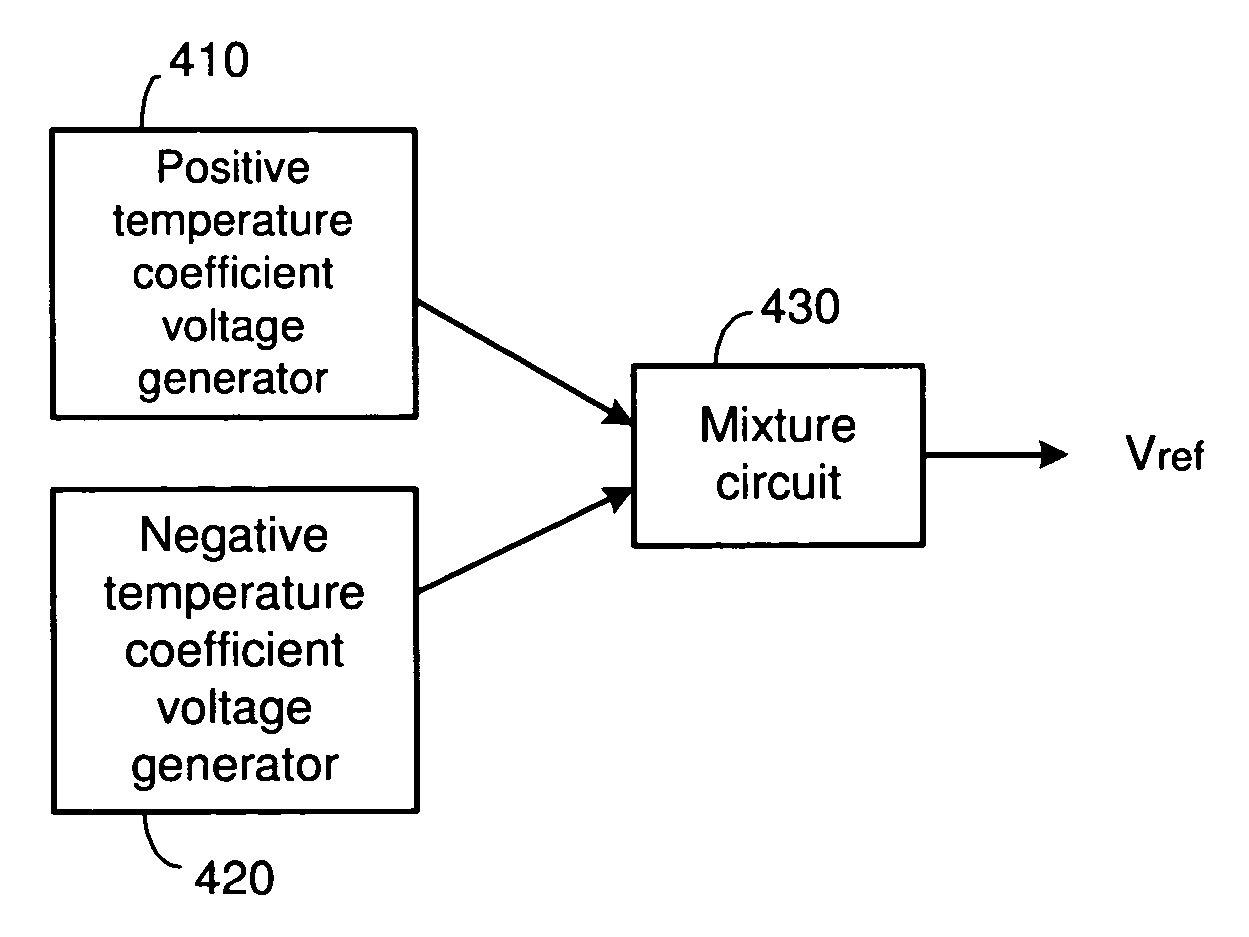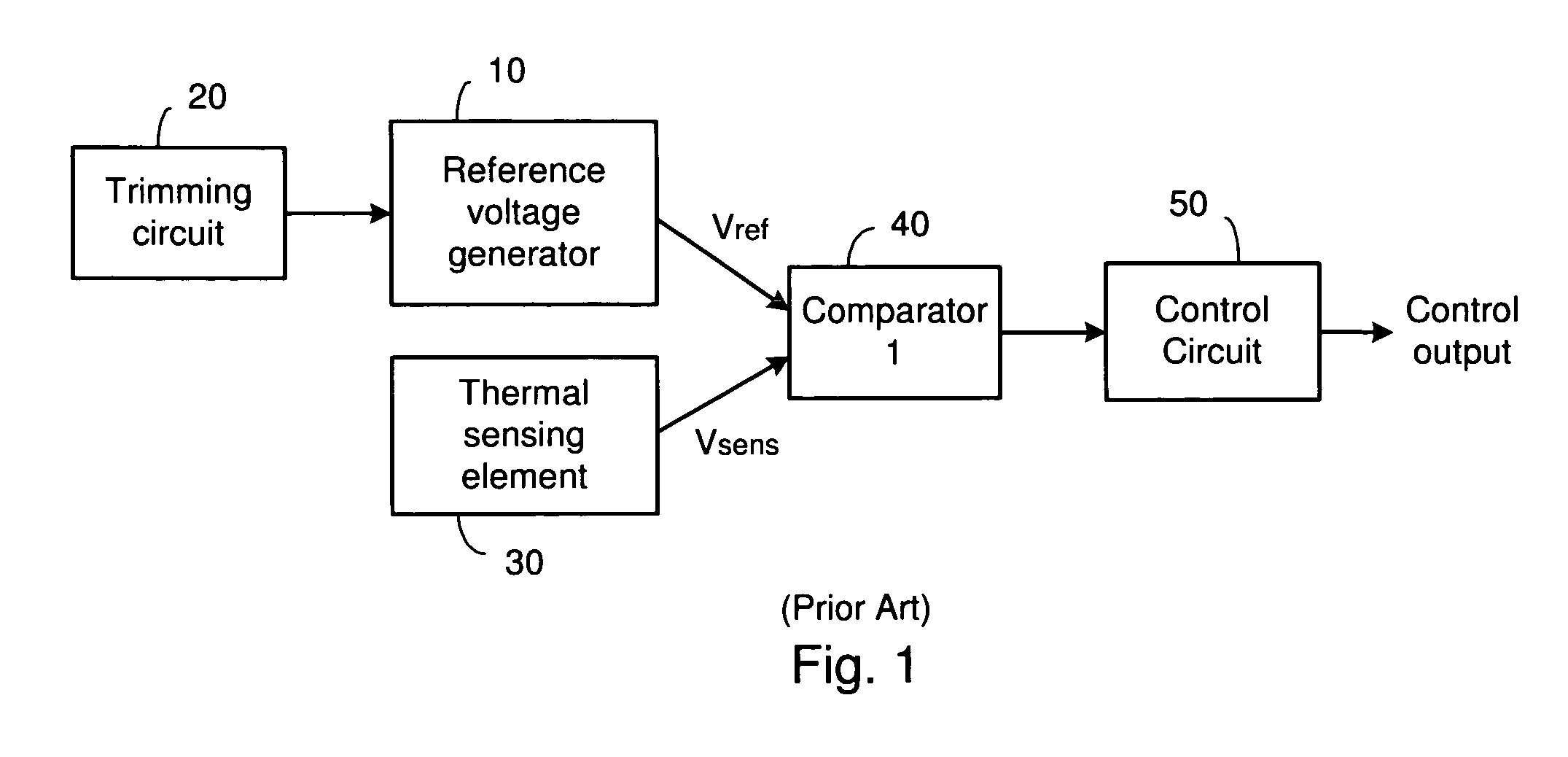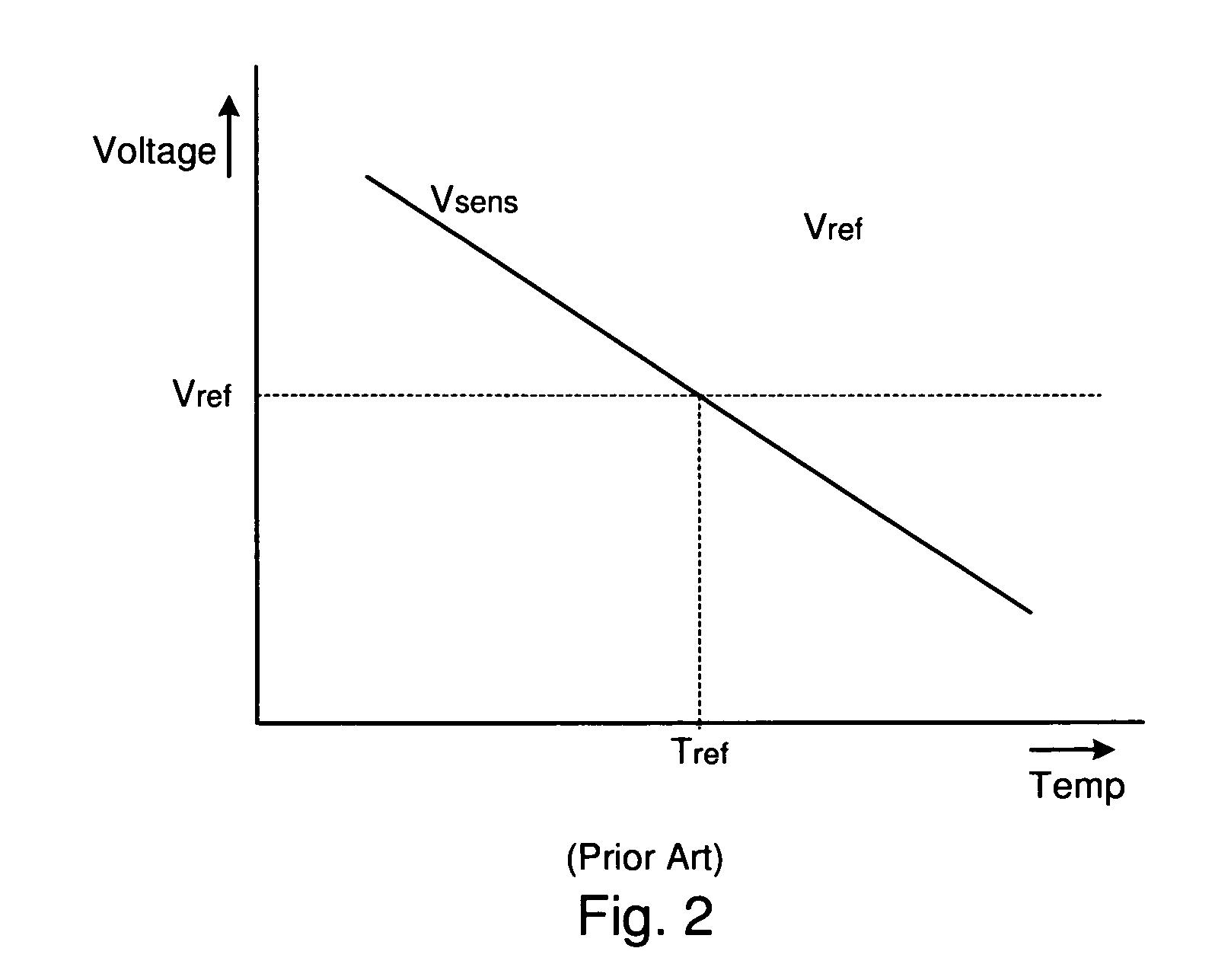Advanced thermal sensor
a technology of thermal sensors and integrated circuits, applied in the field of advanced thermal sensors, can solve the problems of increasing the complexity of integrated circuits such as microprocessors, increasing the amount of heat generated within the circuit, and increasing the power that is typically consumed by these integrated circuits. to achieve the effect of reducing the complexity and size of thermal sensors
- Summary
- Abstract
- Description
- Claims
- Application Information
AI Technical Summary
Benefits of technology
Problems solved by technology
Method used
Image
Examples
Embodiment Construction
[0032] One or more embodiments of the invention are described below. It should be noted that these and any other embodiments described below are exemplary and are intended to be illustrative of the invention rather than limiting.
[0033] Broadly speaking, the invention includes systems and methods for reducing the complexity and size of thermal sensors, where the voltage of a thermally sensitive device is compared to a reference voltage that varies as a function of temperature, rather than being constant. In one embodiment, a diode is used to generate a first voltage that decreases as a function of temperature. One or more reference voltages that increase as functions of temperature are also generated. The first voltage is then compared to the reference voltages. When the first voltage is equal to one of the reference voltages, the temperature of the diode and the reference voltage generation circuit(s) is equal to a known temperature. This known temperature is different for each of ...
PUM
| Property | Measurement | Unit |
|---|---|---|
| temperature | aaaaa | aaaaa |
| voltage | aaaaa | aaaaa |
| cross-sectional area | aaaaa | aaaaa |
Abstract
Description
Claims
Application Information
 Login to View More
Login to View More - R&D
- Intellectual Property
- Life Sciences
- Materials
- Tech Scout
- Unparalleled Data Quality
- Higher Quality Content
- 60% Fewer Hallucinations
Browse by: Latest US Patents, China's latest patents, Technical Efficacy Thesaurus, Application Domain, Technology Topic, Popular Technical Reports.
© 2025 PatSnap. All rights reserved.Legal|Privacy policy|Modern Slavery Act Transparency Statement|Sitemap|About US| Contact US: help@patsnap.com



